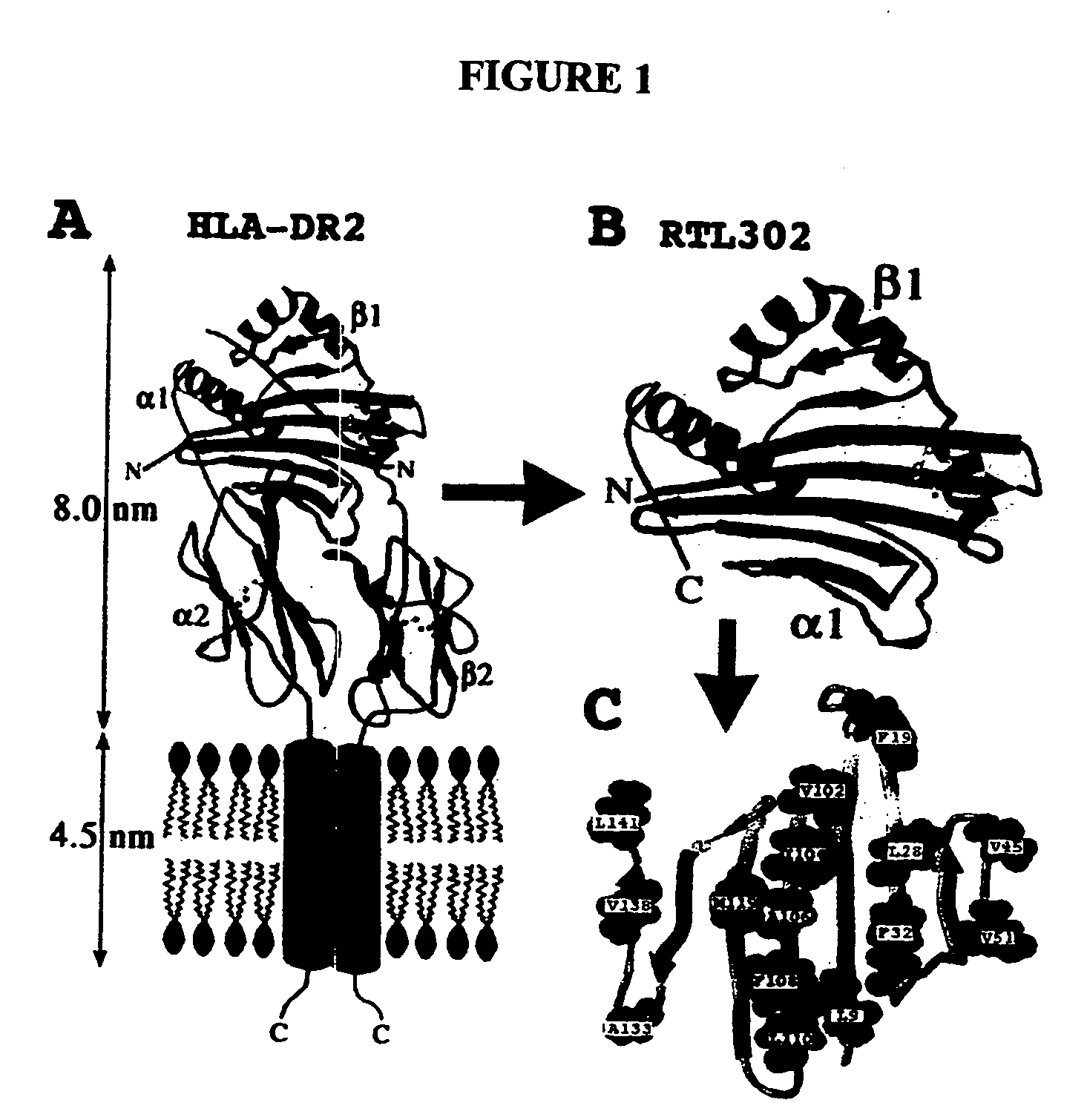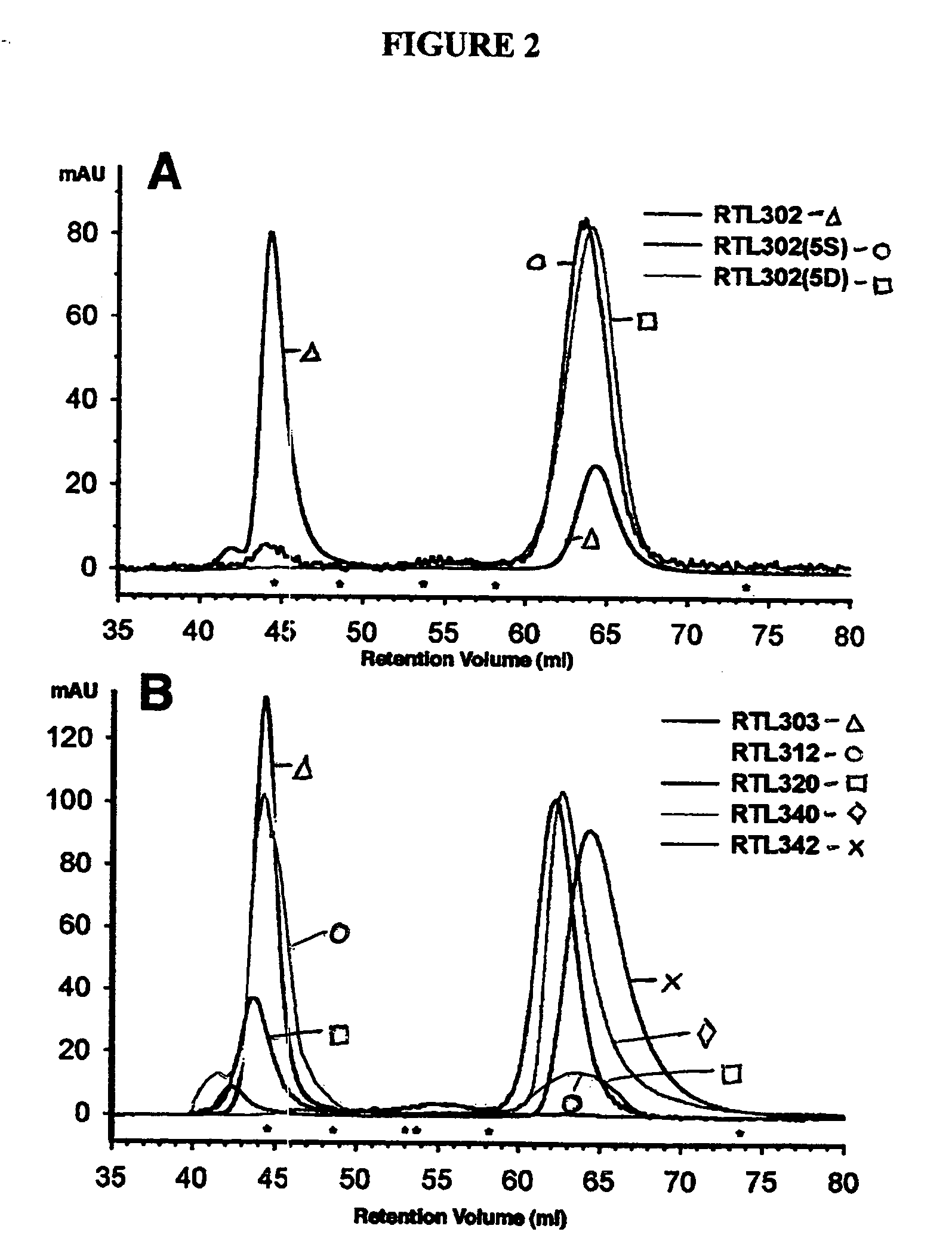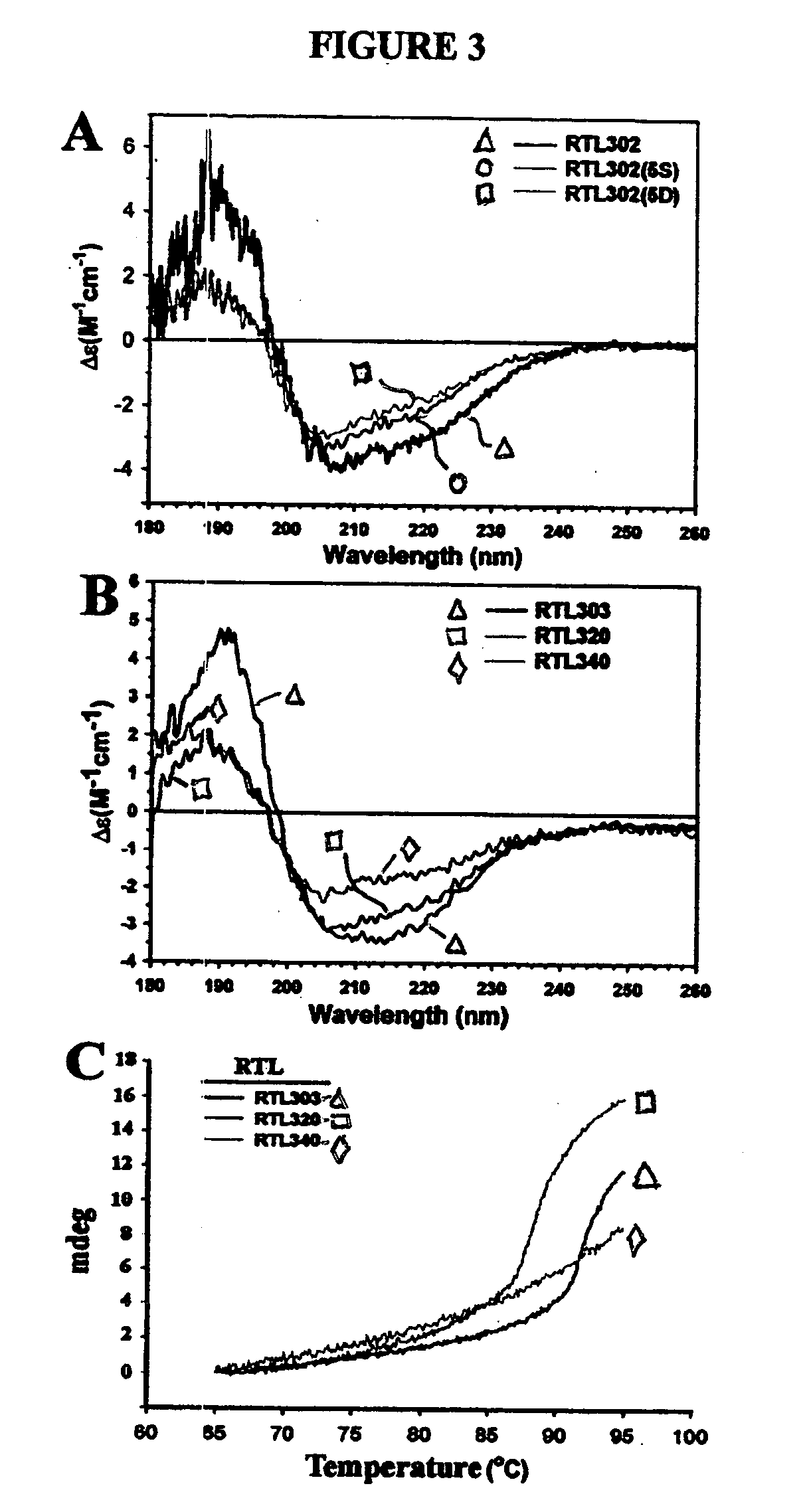Monomeric recombinant MHC molecules useful for manipulation of antigen-specific T cells
a recombinant mhc and mhc technology, applied in the field of recombinant polypeptides comprising major histocompatibility complexes (mhc) molecular domains, can solve the problems of large complexes, difficult production and work, and large antigen recognition complexes, and achieve epitope-specific effects on t-cell activation. powerful
- Summary
- Abstract
- Description
- Claims
- Application Information
AI Technical Summary
Benefits of technology
Problems solved by technology
Method used
Image
Examples
example 1
Methods
[0147] Homology modeling. Much of the logic for dissecting the molecules has been previously described (Burrows et al., Protein Engineering 12: 771-78, 1999; Chang et al., J. Biol. Chem. 276: 24170-76, 2001). Sequence alignment of MHC class II molecules from human, rat and mouse species provided a starting point for our studies and graphic images were generated with the program Sybyl 6.9 (Tripos Associates, St. Louis, Mo.) on an O2 workstation (IRIX 6.5, Silicon Graphics, Mountain View, Calif.) using coordinates deposited in the Brookhaven Protein Data Bank (Brookhaven National Laboratories, Upton, NY). Structure-based homology modeling was based on the refined crystallographic coordinates of human HLA-DR2 (Smith et al., J. Exp. Med. 188: 1511-20, 1998; Li et al., J. Mol. Biol. 304: 177-88, 2000), as well as DR1 (Brown et al., Nature 364: 33-39, 1993; Murthy et al., Structure 5: 1385-96, 1997), murine I-Ek molecules (Fremont et al., Science 272: 1001-04, 1996), and scorpion ...
example 2
Rationally Designed Mutations Converted Complexes of Human Recombinant T Cell Receptor Ligands Into Monomers that Retained Biological Activity
[0157] We have recently described protein engineering studies of recombinant TCR ligands (RTLs) derived from the alpha-1 and beta-1 domains of HLA-DR2 (DRB1*1501 / DRA*0101) (Chang et al., J. Biol. Chem. 276: 24170-76, 2001). These molecules formed well defined aggregates that were highly soluble in aqueous buffers, with retention of biological activity (Burrows et al., J. Immunol. 167: 4386-95, 2001; Buenafe, JBC, 2003; Vandenbark et al., Journal of Immunology, 2003). We analyzed the membrane proximal surface of the β-sheet platform that packed on the membrane distal surfaces of the α2 and β2 Ig-fold domains, specifically looking for features that might contribute to higher-order structures or aggregation (FIG. 1).
[0158]FIG. 1 shows HLA-DR2, RTL302, and the solvent accessible surface of the RTL β-sheet platform. The left panel (A) shows a sca...
PUM
| Property | Measurement | Unit |
|---|---|---|
| pH | aaaaa | aaaaa |
| size | aaaaa | aaaaa |
| surface area | aaaaa | aaaaa |
Abstract
Description
Claims
Application Information
 Login to View More
Login to View More - R&D
- Intellectual Property
- Life Sciences
- Materials
- Tech Scout
- Unparalleled Data Quality
- Higher Quality Content
- 60% Fewer Hallucinations
Browse by: Latest US Patents, China's latest patents, Technical Efficacy Thesaurus, Application Domain, Technology Topic, Popular Technical Reports.
© 2025 PatSnap. All rights reserved.Legal|Privacy policy|Modern Slavery Act Transparency Statement|Sitemap|About US| Contact US: help@patsnap.com



